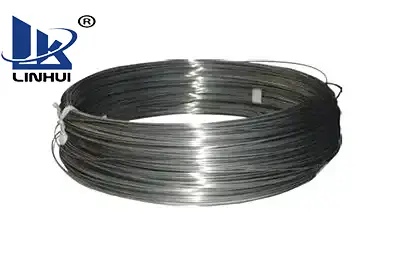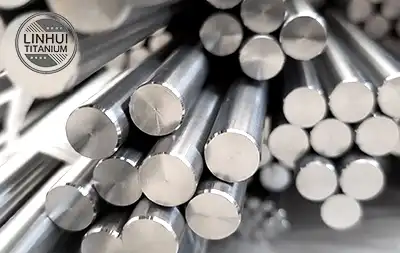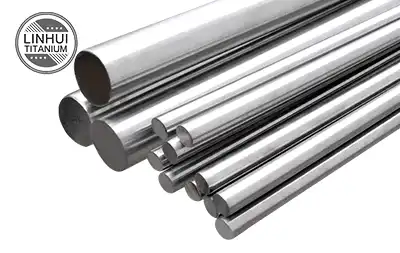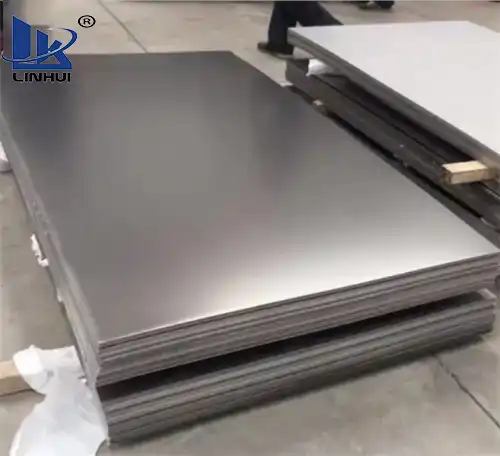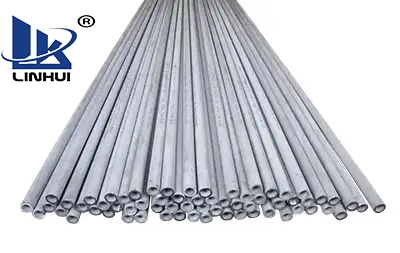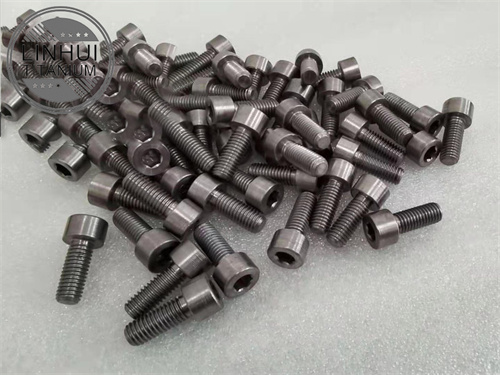The density of titanium alloys is generally around 4.5g/cm3, which is only 60% of steel. The strength of pure titanium is close to the strength of ordinary steel. Some high-strength titanium alloys exceed the strength of many alloy structural steels. Therefore, the specific strength (strength/density) of titanium alloy is much greater than that of other metal structural materials, as shown in the table. Parts and components with high unit strength, good rigidity, and lightweight can be produced. Currently, titanium alloys are used in aircraft engine components, frames, skins, fasteners, and landing gear.
What is the hardness level of titanium?
Titanium alloy is an alloy based on titanium with other elements added. There are two types of isomorphic crystals of titanium: below 882°C, it is α-titanium with a close-packed hexagonal structure, and above 882°C, it is β-titanium with a body-centered cubic structure.
Alloying elements can be divided into three categories according to their influence on phase transformation temperature:
① Elements that stabilize the α phase and increase the phase transition temperature are α-stabilizing elements, including aluminum, carbon, oxygen, and nitrogen. Among them, aluminum is the main alloying element of titanium alloy. It has obvious effects on improving the normal and high-temperature strength of the alloy, reducing the specific gravity, and increasing the elastic modulus.
② Elements that stabilize the β phase and lower the phase transition temperature are β-stabilizing elements, which can be divided into two types: isomorphous and eutectoid. The former includes molybdenum, niobium, vanadium, etc.; the latter includes chromium, manganese, copper, iron, silicon, etc.
③ Elements that have little effect on the phase transition temperature are neutral elements, including zirconium, tin, etc.
Oxygen, nitrogen, carbon, and hydrogen are the main impurities in titanium alloys. Oxygen and nitrogen have a large solubility in the α phase and have a significant strengthening effect on titanium alloys, but they reduce the plasticity. It is usually stipulated that the oxygen and nitrogen contents in titanium are below 0.15~0.2% and 0.04~0.05% respectively. The solubility of hydrogen in the α phase is very small. Excessive hydrogen dissolved in titanium alloys will produce hydrides, making the alloy brittle. Usually, the hydrogen content in titanium alloys is controlled below 0.015%. The dissolution of hydrogen in titanium is reversible and can be removed by vacuum annealing.
Titanium is an allotrope with a melting point of 1720°C. It has a close-packed hexagonal lattice structure below 882°C, which is called alpha titanium; it has a body-centered cubic quality structure above 882°C, which is called beta titanium. Using the different characteristics of the above two structures of titanium, and adding appropriate alloying elements, the phase transformation temperature and phase content are gradually changed to obtain titanium alloys of different structures. At room temperature, titanium alloys have three matrix structures, and titanium alloys are divided into the following three categories: α alloy, (α+β) alloy, and β alloy. In my country, they are represented by TA, TC, and TB respectively.
Titanium is a new type of metal. The function of titanium is related to the content of impurities such as carbon, nitrogen, hydrogen, and oxygen. The purest titanium iodide has an impurity content of no more than 0.1%, but its strength is low and its plasticity is high. The functions of 99.5% industrial pure titanium are density ρ=4.5g/cm3, melting point 1725℃, thermal conductivity λ=15.24W/(m. K), tensile strength σb=539MPa, elongation δ=25%, and cross-section shortening Rate ψ = 25%, elastic modulus E = 1.078×105MPa, hardness HB195.
Summary: The hardness of titanium alloys have high strength and specific strength, good corrosion resistance, and high and low-temperature properties; titanium and titanium alloys are non-magnetic and will not be magnetized in a strong magnetic field; some titanium alloys have some special properties. Properties, such as Ti2Ni alloy are a good shape memory material, and Nb2Ti alloy is a good low-temperature superconducting material.
Titanium alloys are widely used in the aerospace industry, petroleum, chemicals, metallurgy, biomedicine, sporting goods, and other fields, and have now become indispensable metal materials for new processes, new technologies, and new equipment.






